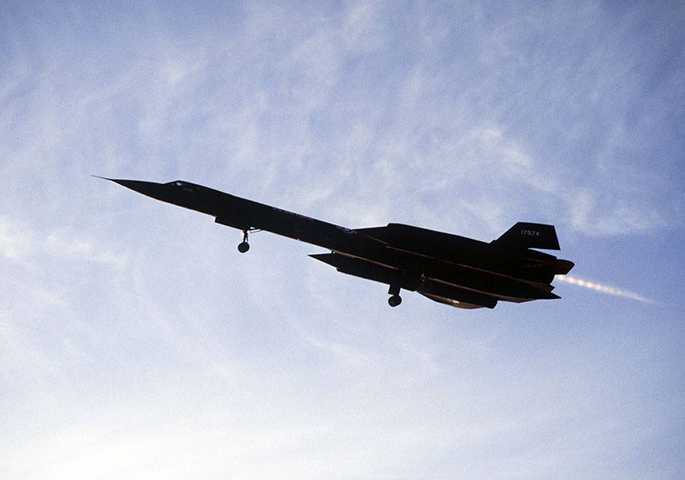This is what SR-71′ asymmetric thrust looked like.
Shot by Ken Hackman possibly in 1983, the photo above shows an SR-71 Blackbird 61-7974 unusually flying with one engine in afterburner and the other either shut down or in mil power.
Blackbird pilots trained for asymmetric thrust conditions and flew practice patterns to manage such unusual situation: indeed, the photo seems to show the left vertical tail deflected to compensate the yaw induced by the lack of thrust from the (right) engine, either flamed out, shut down, or simply idled.
The SR-71’s engine, the Pratt and Whitney J-58 was a dual cycle engine, the first of its kind, as it worked as a standard afterburning turbojet at subsonic and transonic speeds and then switched to a ramjet-like behavior at around Mach 2, providing more than 32,000 pounds of thrust at sea level. The engine made extensive use of high temperature nickel superalloys, especially Inconel and Waspaloy, to withstand temperatures ranging from 800° F (about 430° C) in the inlet to 3200° F (1760° C) in the afterburner duct.
The engine had a nine-stage compressor with an 8.8:1 pressure ratio. At speeds around Mach 2, six bypass tubes moved bleed air from the fourth stage of the compressor to the afterburner section, allowing the engine to act like a ramjet and to operate at a higher fuel efficiency. Even with this increase of the efficiency, at Mach 3.2, the Blackbird’s cruise speed, the engine provided only 20% of the thrust. The remaining 80% was generated by the air inlets.













